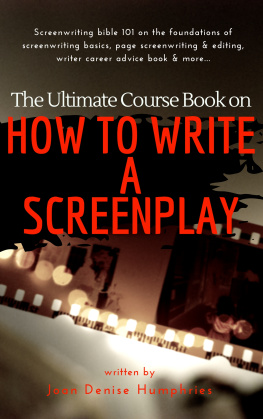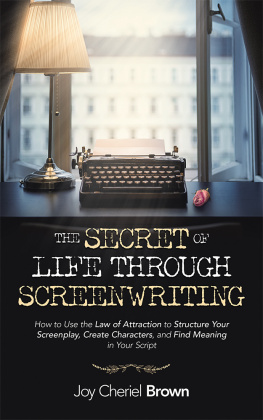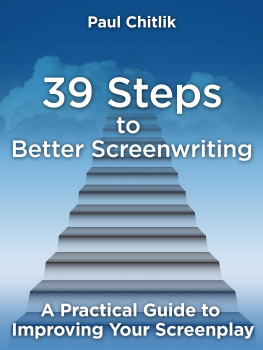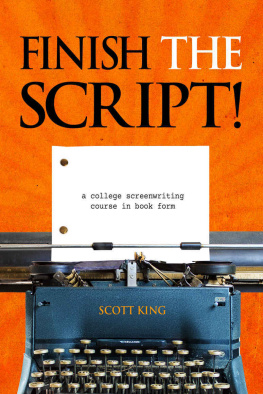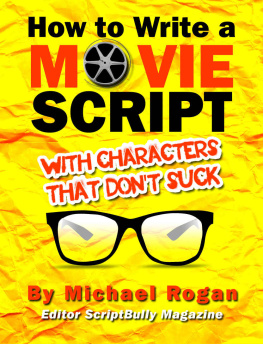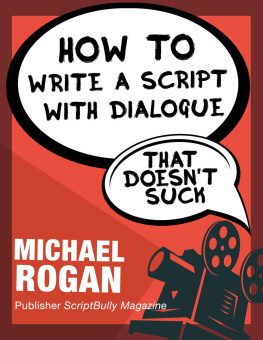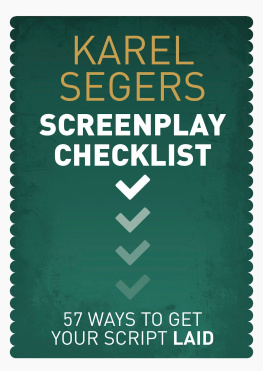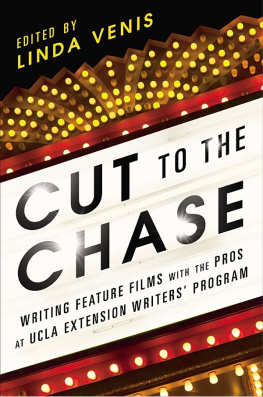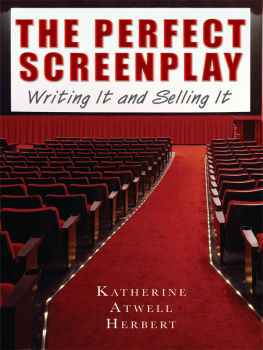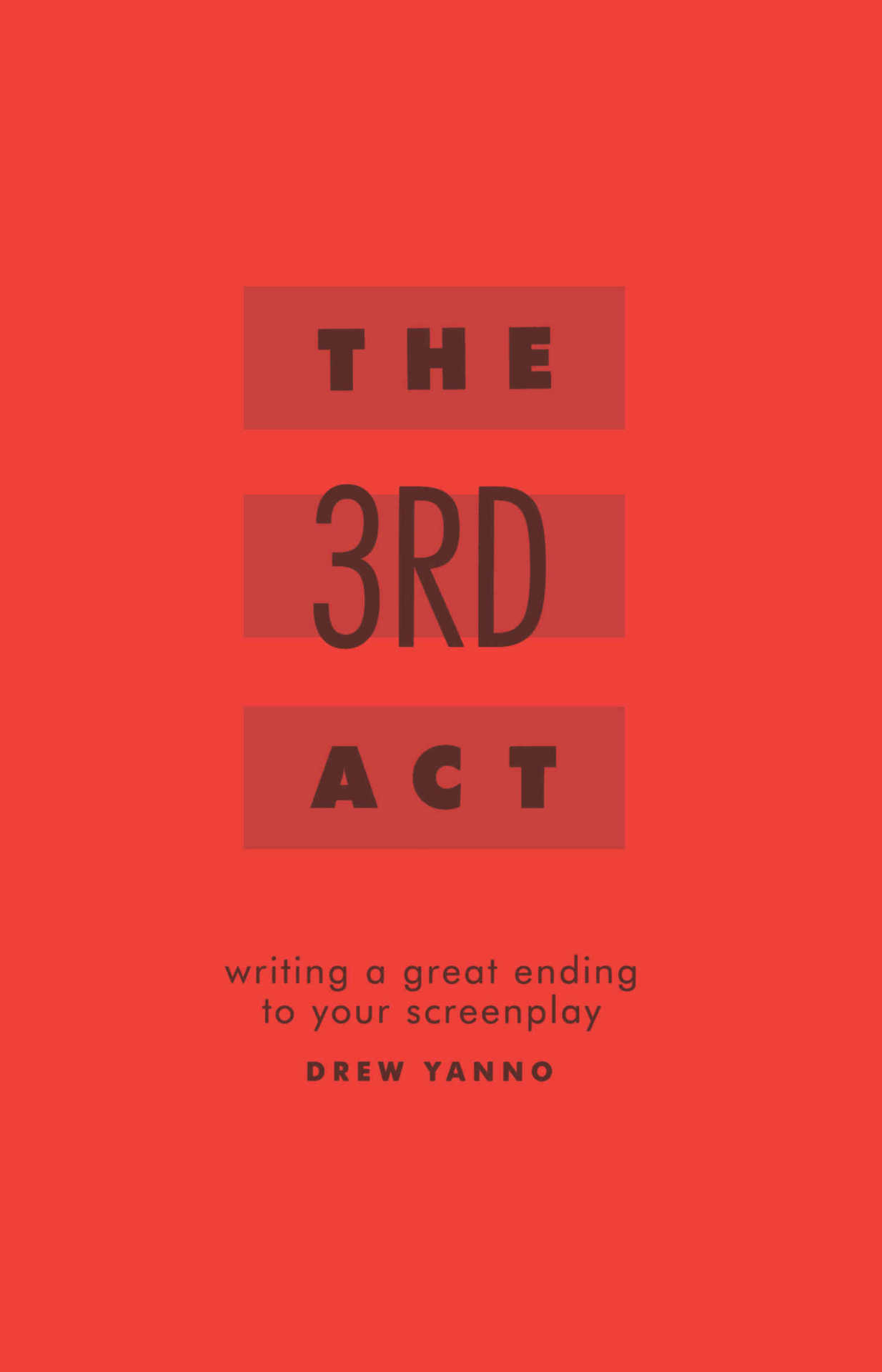A PELLEGRINO PRESS IMPRINT
Copyright 2006 by Drew Yanno
First printed by The Continuum International Publishing Group Inc. in 2006
All rights reserved. No part of this book may be reproduced, stored in retrieval system or transmitted, in any form or by any means, electronic, mechanical, photocopying, recording or otherwise, without the written permission of the publisher.
Library of Congress Cataloging-in Publication Data
Yanno, Drew
The third act: a structural approach to writing great endings/by Drew Yanno.p.cm.
Includes biographical references and index
ISBN - 13:978-0-8264-1878-4(pbk:alk.paper)
ISBN - 10:0-8264-1878-3(pbk:alk.paper)
1. Motion picture authorship. 2. Closure (Rhetoric) 1. Title
PN1996.Y33 2006
808.2'3--dc22
Introduction
Imagine for a moment that at the end of the legendary film Casablanca , Rick allows Captain Renault to arrest Victor Laszlo while Rick and Ilsa use the much-desired exit visas to board the plane for Lisbon and, eventually, America.
Or try to picture Butch and Sundance somehow managing to shoot their way out of that small, out-of-the-way cantina and, wounded but still alive, riding off to freedom somewhere in the hills of Bolivia at the end of Butch Cassidy and the Sundance Kid .
Or suppose in the final moments of Barry Levinsons brilliant Rain Man , Charlie Babbitt succeeds in his legal battle to win custody of his autistic brother Raymond, and the two proceed to live together in the Hollywood Hills like a couple of carefree (and rich) bachelors.
Would any of these alternate endings have changed your feelings about those great films?
Would they have in any way improved those already Oscar-winning hits?
Or would they have detracted from their status as great in the minds of all of us?
In each one of those films, we can recall exactly how they concluded, even years after first viewing them. Those images are etched in our minds forever.
In fact, it would probably not be overstating it to suggest that most of us can recall the feeling those endings gave us when we first viewed those films. And no doubt many would admit that they have wondered what it might have felt like had they ended in some other fashion.
Its likely that we concluded then and would confirm now that each of them ended exactly as they should have. Which is part of what makes them great.
So how did they do that? How did the writers find the exact right ending for those films? How did each of those endings come about from the writers standpoint? Did they know prior to putting fingers to keyboard that they would resolve themselves in that fashion? Did the choices the writers made along the way lead to no other conclusion? Did they know some secret that we dont?
Not likely.
Equally as unlikely is that each of them wrote that ending with the structure in mind that I am about to lay out in this book. Not consciously anyway. (In the case of Howard Koch and the Epstein brothers, the credited writers of Casablanca , I wasnt even alive when it was written.)
But I think it is safe to say that each of the writers of those films, as well as countless other writers of countless other great films, in some form or fashion, included in their writing of those endings all of the principles that you are about to read in this book.
They may not have called them the same things I do. They may not have even articulated them at all. In some instances, it may have been no more than a gifted writers God-given talent and instinct that allowed them to produce their great ending.
But what is instinct to some, must be taught to others. Be aware that most screenwriters have been taught how to write screenplays, either by others or through some effort of their own. Much of what we might call instinct is actually the product of learning that has been absorbed and processed and no longer requires conscious application.
If you are one of those writers whom God has blessed with pure instinct and talent, you can probably put this book down. If not, then you should keep reading.
Great endings dont happen by accident. They happen because the writer has made them happen. Oftentimes, they do so by simple trial and error (and some tireless rewrites). The writers may even credit serendipity. But I think they happen because of a time-tested structure employed by the writer either subconsciously or by that learned instinct I referred to above.
Now you may be wondering if I am claiming to have invented something here. Im not. What I have done is simply to articulate what already exists in many great films with great endings. It is just a new way of looking at the third and final act in a three-act story and, within it, identifying a set of principles - a structure - that seems to apply to all good third acts. In that way, it is not much different than the concept of three-act structure itself, which has existed in cinema almost from its beginning as an art form, even though it has only been taught on a large scale for less than thirty years.
You may also wonder if applying these elements or principles to your writing will lead to formulaic endings. The short answer to that is no. The same concern and criticism has been leveled at writing screenplays using three-act structure ever since that paradigm was first espoused by Syd Field. The criticism does not apply there, nor should it apply here.
Want proof? Well, surely you would agree that Good Will Hunting does not have the same ending as Casablanca or Rocky or Saving Private Ryan . Yet all four of those films share the same third act structure that I am about to set forth in this book. By the same token, those aforementioned movies are all stories told in three acts and no one would consider them to be only slight variations of one another. How can that be? How can they be both the same and different? Simple. Structure is not restrictive. It is simply instinct revealed.
It should be noted that I developed this method of teaching the third act over the course of more than five years. I did so to make it easier for my students to understand just what is taking place in the typical third act. Thereafter, when it came time for those students to begin writing themselves, I discovered that they could utilize this structure to help them write the third act, just as they use the principles of three-act storytelling to write the entire script. After reading this book, I believe you will be able to do so as well.
Here are some things I should note before we proceed:
You can probably already tell from the title that this book does not purport to be a comprehensive screenwriting instructional manual. There are plenty of those on the market. They are all quite useful, although, in my opinion, none of them provide what this book will with respect to endings.
This book also does not contain any advice about how to get your script to the right producer or agent. It contains no secrets for getting people in Hollywood to read your work. There are many resources for that as well, and a simple Google search will turn up plenty of those.
At the same time, this book does assume that you have studied screenwriting at some level prior to reading it. If you havent, you may want to give one of those books a look before proceeding. If you would rather just plow ahead, I have included a chapter on three-act structure since it is crucial to the discussion of the structure of the third act. This may be sufficient for those of you who havent yet studied screenwriting, but I make no promises.



